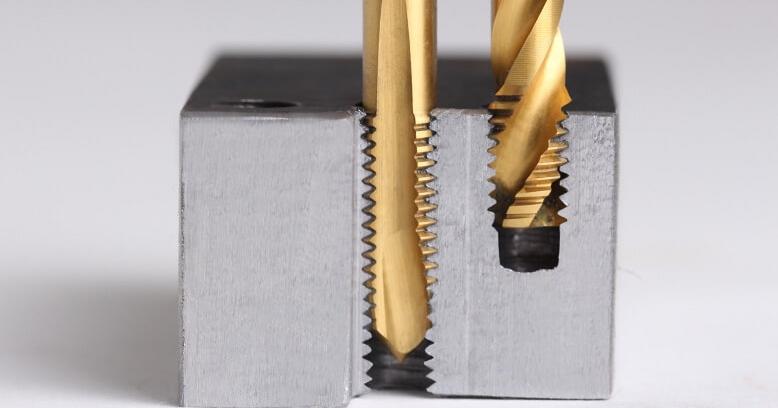Are you curious to know what is a blind hole? You have come to the right place as I am going to tell you everything about a blind hole in a very simple explanation. Without further discussion let’s begin to know what is a blind hole?
In the world of construction and manufacturing, various technical terms and jargon are used to describe different features, techniques, and components. One such term that often arises is “blind hole.” If you’re unfamiliar with this term and curious to learn more about what a blind hole is and its significance, you’ve come to the right place. In this blog post, we will demystify the concept of a blind hole, explaining its definition, purpose, and common applications across different industries.
What Is A Blind Hole?
A blind hole, also known as a “partial hole” or a “bottoming hole,” refers to a hole that does not pass through the entire thickness of the material being drilled or machined. Instead, it has a limited depth, stopping short of reaching the other side. The portion of the hole that does not extend through the material is often referred to as the “blind” or “bottom” end.
The Purpose Of Blind Holes
Blind holes serve various purposes, depending on the context and industry. Here are a few key reasons why blind holes are used:
- Fasteners and Threads: Blind holes are commonly utilized in the installation of fasteners such as screws, bolts, and threaded inserts. By drilling a blind hole, the fastener can be inserted and secured within the material, providing a strong and concealed connection without protruding on the opposite side.
- Counterboring and Countersinking: Blind holes are also used in counterboring and countersinking operations. Counterboring involves drilling a larger-diameter hole partially into the material’s surface to accommodate the head of a screw or bolt. Countersinking, on the other hand, involves creating a conical recess at the top of a blind hole to allow the fastener’s head to sit flush with or below the material’s surface.
- Fluid Channels and Passages: In various applications, blind holes are used to create internal fluid channels or passages within a component. These blind holes can be designed to direct the flow of liquids, gases, or other substances within a system, ensuring efficient circulation and distribution.
Common Applications Of Blind Holes
Blind holes find extensive use across multiple industries and applications. Here are a few examples:
- Woodworking and Furniture: In carpentry and furniture making, blind holes are often drilled to install hardware such as hinges, drawer slides, and knobs. This allows for secure and concealed fastening without compromising the appearance of the finished product.
- Metalworking and Machining: In metalworking processes, blind holes are essential for threading operations, where bolts or screws need to be securely fastened without protruding on the other side. They are also used for creating precision bores, fluid passages, and integrated features within metal components.
- Plumbing and Piping Systems: Blind holes are utilized in plumbing and piping systems to create threaded connections, mount fixtures, or accommodate fittings. By using blind holes, the visible surface remains clean and unobstructed while maintaining a leak-proof and secure connection.
Conclusion
In summary, a blind hole is a partially drilled hole that does not extend through the entire thickness of the material. It serves various purposes, including fastener installation, counterboring, countersinking, and creating fluid channels. Blind holes find applications in woodworking, metalworking, plumbing, and other industries where concealed, secure, and efficient connections are required.
Understanding the concept of blind holes allows construction professionals, engineers, and manufacturers to make informed decisions regarding hole placement, fastener selection, and component design. By utilizing blind holes appropriately, they can achieve desired outcomes in terms of strength, aesthetics, and functionality.
By visiting Thesbb you can get more knowledge about various topics.
FAQ
What Is A Blind Hole Used For?
A blind hole is a hole that does not completely penetrate the component and therefore has a certain depth. Blind holes are used when the material thickness of the workpiece is very large or drilling through is not necessary. In addition, a through-hole may not be desired or possible for structural reasons.
What Is The Difference Between A Hole And A Blind Hole?
A hole may be a through hole (or ‘thru-hole’) or a blind hole. A through hole goes all the way through a part’s wall. In other words, there’s an opening on both sides. A blind hole, however, has a specific depth, it doesn’t break through to the other side of the workpiece.
How Deep Can You Tap A Blind Hole?
The minimum full thread tapping depth (H) for through and blind holes is equal to the insert nominal length (LN) plus one thread pitch. In this case H = . 500 + . 050 = 0.550.
What Do You Call A Hole That Doesn’t Go All The Way Through?
Holes that do not go completely through the material are known as blind holes.
I Have Covered All The Following Queries And Topics In The Above Article
What Is A Blind Hole In Engineering
What Is A Blind Hole In Drilling
What Is A Blind Hole?
What Is A Blind Hole In Machining
What Is A Blind Hole Machining
Types Of Holes
Blind Hole Vs Through Hole
Through Hole Drilling
Blind Hole Drill Bits
Blind Hole Tap
Blind Hole Tap Set
What Is A Blind Hole
What is a blind hole in wood
What is a blind hole?
Is there a callout symbol for blind holes?

